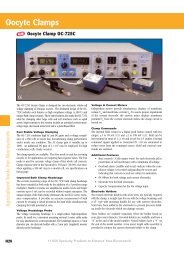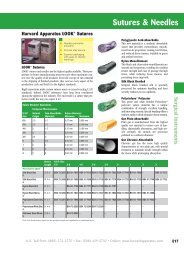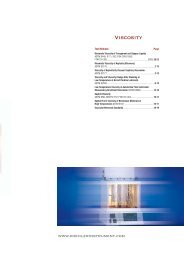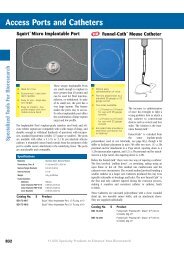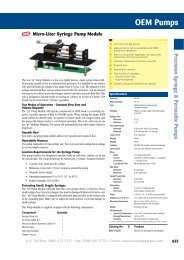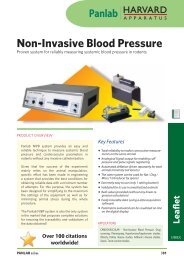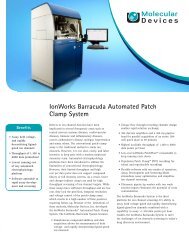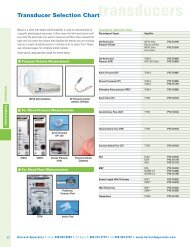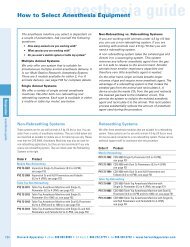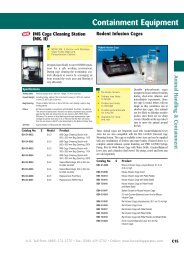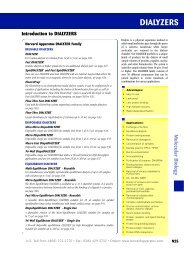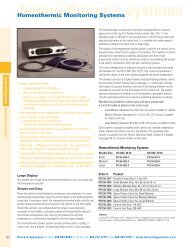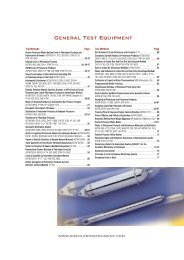Sensory Motor & Coordination Guide
Sensory Motor & Coordination Guide
Sensory Motor & Coordination Guide
You also want an ePaper? Increase the reach of your titles
YUMPU automatically turns print PDFs into web optimized ePapers that Google loves.
<strong>Sensory</strong> <strong>Motor</strong> & <strong>Coordination</strong> <strong>Guide</strong><br />
Behavioral Test<br />
Startle Response to<br />
Acoustic and Tactile Stimulus<br />
The startle response is a brainstem reflex<br />
elicited by an unexpected acoustic or tactile<br />
stimulus. The evaluation of startle reflex<br />
response (and its habituation) to acoustic or<br />
tactile stimulus of different intensities is widely<br />
used for the detection of sensorimotor gating<br />
and hearing deficiencies in phenotyping<br />
evaluations.<br />
Reasons for Choosing This Test<br />
➤<br />
➤<br />
➤<br />
Neurological phenotyping for motor and sensory<br />
capabilities<br />
Objective measurement: automated detection of<br />
startle reflex<br />
Sensitive for both rats and mice<br />
Reasons for Not Choosing This Test<br />
➤<br />
➤<br />
Restraint conditions (habituation phase needed)<br />
Non-specific influence of attention processes<br />
Related Human Disease/Applications<br />
➤<br />
➤<br />
➤<br />
➤<br />
➤<br />
➤<br />
Neurological Phenotyping<br />
Hyperekplexia<br />
Auditory Deficits<br />
Parkinson’s Disease<br />
Huntington’s Disease<br />
Schizophrenia<br />
Behavioral Test<br />
Prepulse Inhibition<br />
of Startle Reflex<br />
Prepulse Inhibition (PPI) paradigm is commonly<br />
used to evaluate sensorimotor gating as well as<br />
attentional processes involved in information<br />
selection processing. The startle response is a<br />
brainstem reflex elicited by an unexpected<br />
acoustic or tactile stimulus. In the prepulse<br />
inhibition test, sensorimotor gating is assessed<br />
by evaluating the characteristics of the innate<br />
reduction of the startle reflex induced by a weak<br />
prestimulus. This test measures pre-attentive<br />
processes that operate outside of conscious<br />
awareness and is widely used in animal models<br />
of diseases marked by an inability to inhibit, or<br />
“gate” irrelevant information in sensory, motor,<br />
or cognitive domains.<br />
Reasons for Choosing This Test<br />
➤<br />
➤<br />
➤<br />
Reproduces the same paradigm used in humans to<br />
detect attentional and sensorimotor gating disorders<br />
Objective measurement: automated detection of<br />
startle reflex<br />
Sensitive for both rats and mice<br />
Reasons for Not Choosing This Test<br />
➤<br />
➤<br />
Restraint conditions (habituation phase needed)<br />
Influenced by non-specific effects on<br />
sensorimotor gating<br />
Related Human Disease/Applications<br />
➤<br />
➤<br />
➤<br />
➤<br />
➤<br />
➤<br />
➤<br />
➤<br />
➤<br />
Drug Screening<br />
Phenotyping<br />
Attention-Deficit Hyperactivity Disorder (ADHD)<br />
Schizophrenia<br />
Autism<br />
Obsessive Compulsive Disorder<br />
Huntington’s Disease<br />
Nocturnal Enuresis<br />
Tourette’s Syndrome<br />
20



